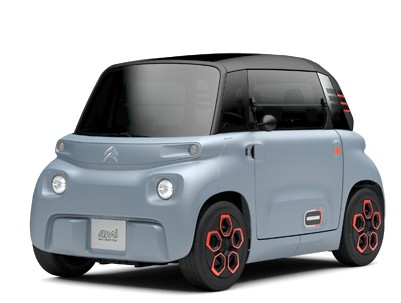The DGT has confirmed that there will be a new driving licences in Spain, the B driving licence, that will arrive in 2024 and be for 16-year-olds. Those whose qualify for the new B1 licence will be able to use quadricycles and tricycles weighing up to 400 kg on public roads at a maximum speed of 90 km/h.
The category B licence is the normal qualification for car drivers, BE if it includes towing a trailer (there are other conditions attached to this), whereas the new B1 driver’s license will be a step prior to obtaining the B permit.
In Spain, it is an essential requirement to be of legal age to drive a motor vehicle, unless it is a moped. In other words, only those who have reached the age of 18 will be able to pass the practical part of the driving test (the theoretical part can be started six months after turning 18).
Driving with minors accompanied by an adult is also not allowed, as is the case in other countries such as the United States. In fact, allowing an unlicensed driver to be in control of a vehicle, even when accompanied, is not permitted. In the UK, for example, it is common practice for novice drivers to practice with an adult before taking their test. This is not allowed in Spain, only qualified driving instructors are allowed to accompany unlicensed drivers in this way.
Although we still have to wait a little longer for the full details of how this new category of driving licence in Spain will be implemented, with this confirmation, it opens up a new world of mobility for younger people in particular.
The B1 permit already exists in other European countries such as Portugal, Italy, France and the United Kingdom. When it becomes a reality in Spain, it will allow motor quadricycles to be driven with a maximum speed of more than 45 km/h, this category of vehicles (classified as L7e) includes some which are sometimes referred to as so-called microcars, although that description is incorrect, such as the Citroën AMI and the XEV Yoyo, which currently require a B permit.


L7e vehicles are mostly electric heavy-duty quadricycles. Although they look similar, they are not microcars, but have features similar to a conventional vehicle and their price can be around 15,000 euro (there is also a Government-funded subsidy plan available to contribute to the cost). They have a maximum weight of up to 400 kg, not including the battery, they cannot exceed 15 kW (20 CV) of power or exceed a maximum speed of 90 km/h. They are also vehicles with fewer components as they are electric and, since they do not make long journeys and are confined to urban spaces or residential areas, their maintenance is minimal.
In an interview, the general director of Traffic, Pere Navarro, has confirmed that it will be in 2024 when the B1 permit enters into force in Spain. “It will be after the closure of the new European driving licence directive in Brussels, but it will already be in 2024,” said Navarro.
Experts coincide in pointing out the convenience of the B1 permit that will allow electric mobility to be promoted because most of the quadricycles for sale are zero emissions. To this, Pere Navarro added at the time that those classified as L7 are a very suitable means of transport for rural areas where journeys are usually short.
Like any other driving licence, it will not be mandatory, but it is seen as a steppingstone that can have long-term benefits such as an improvement in road safety for those who do qualify.
For minors, driving an L7e category vehicle can serve as preparation before getting behind the wheel of a more powerful car. In addition, they are safer than motorcycles, bikes or scooters because they have a bodywork and more security systems.
In this sense, it is also important to remember that the Traffic and Road Safety Law establishes zero alcohol tolerance for minors, so that once the new licence is created, those who obtain it who are under 18 will not be able to consume even a sip of alcohol.
Thanks to this, young drivers will be able to use quadricycles and tricycles weighing up to 400 kg on public roads at a maximum speed of 90 km/h.





